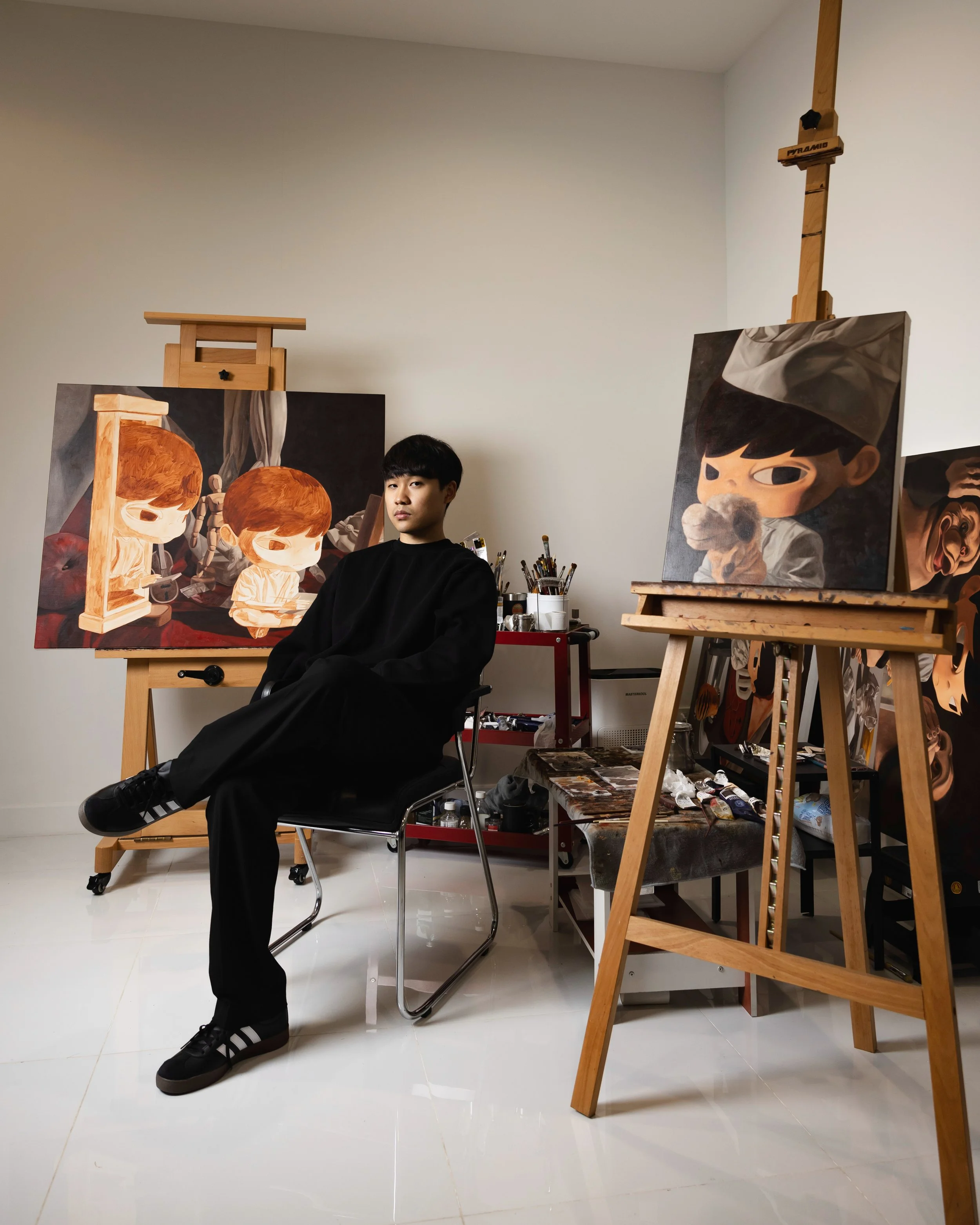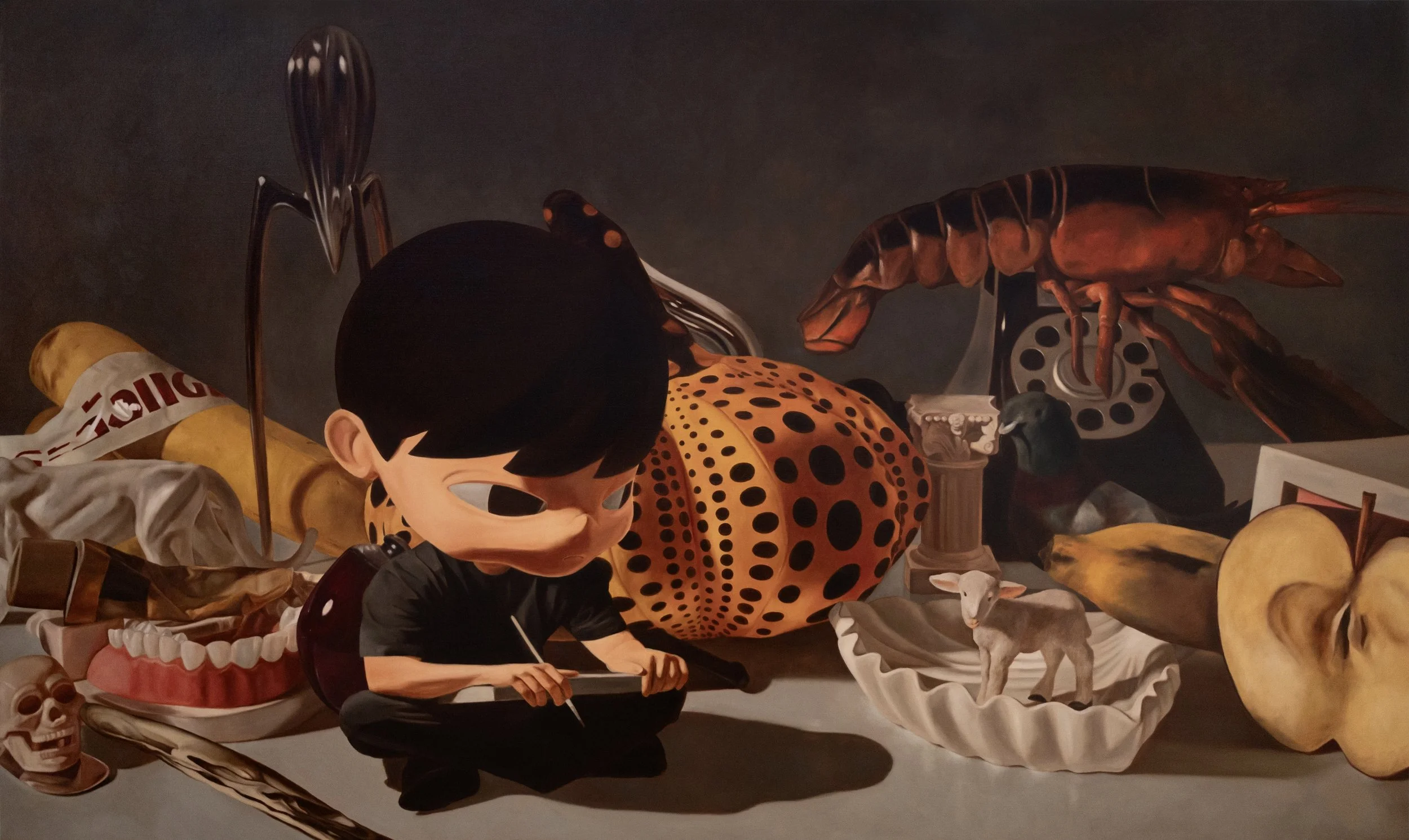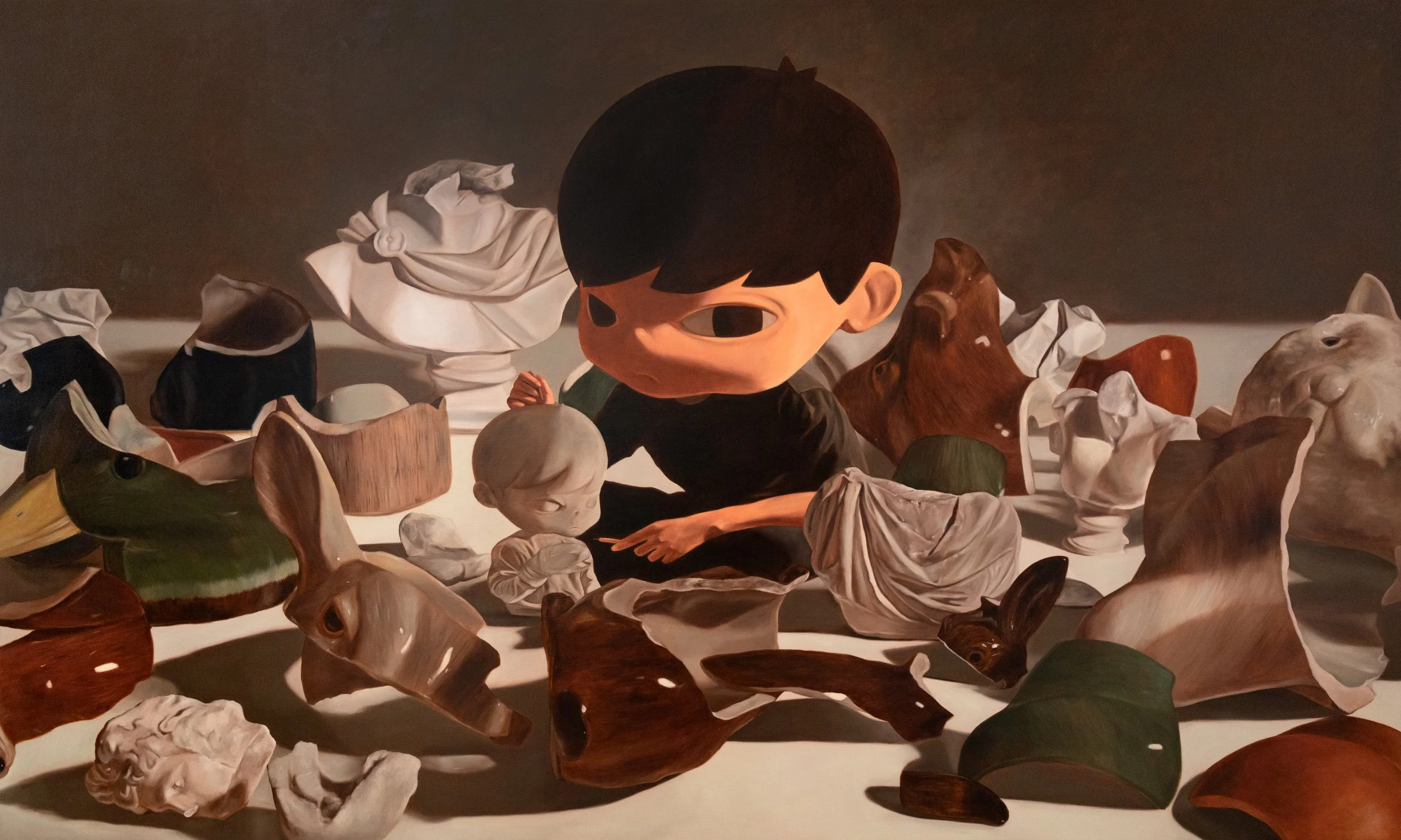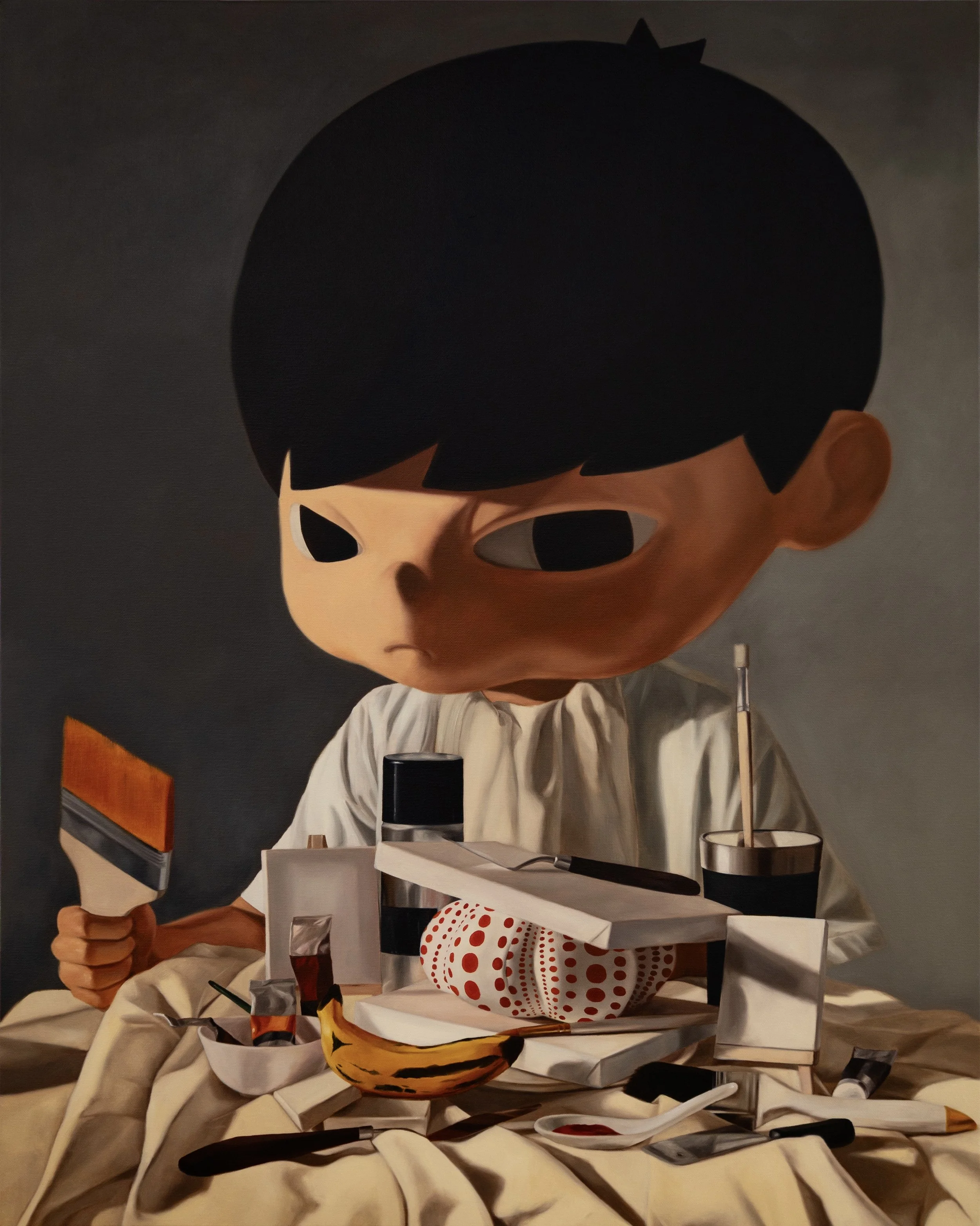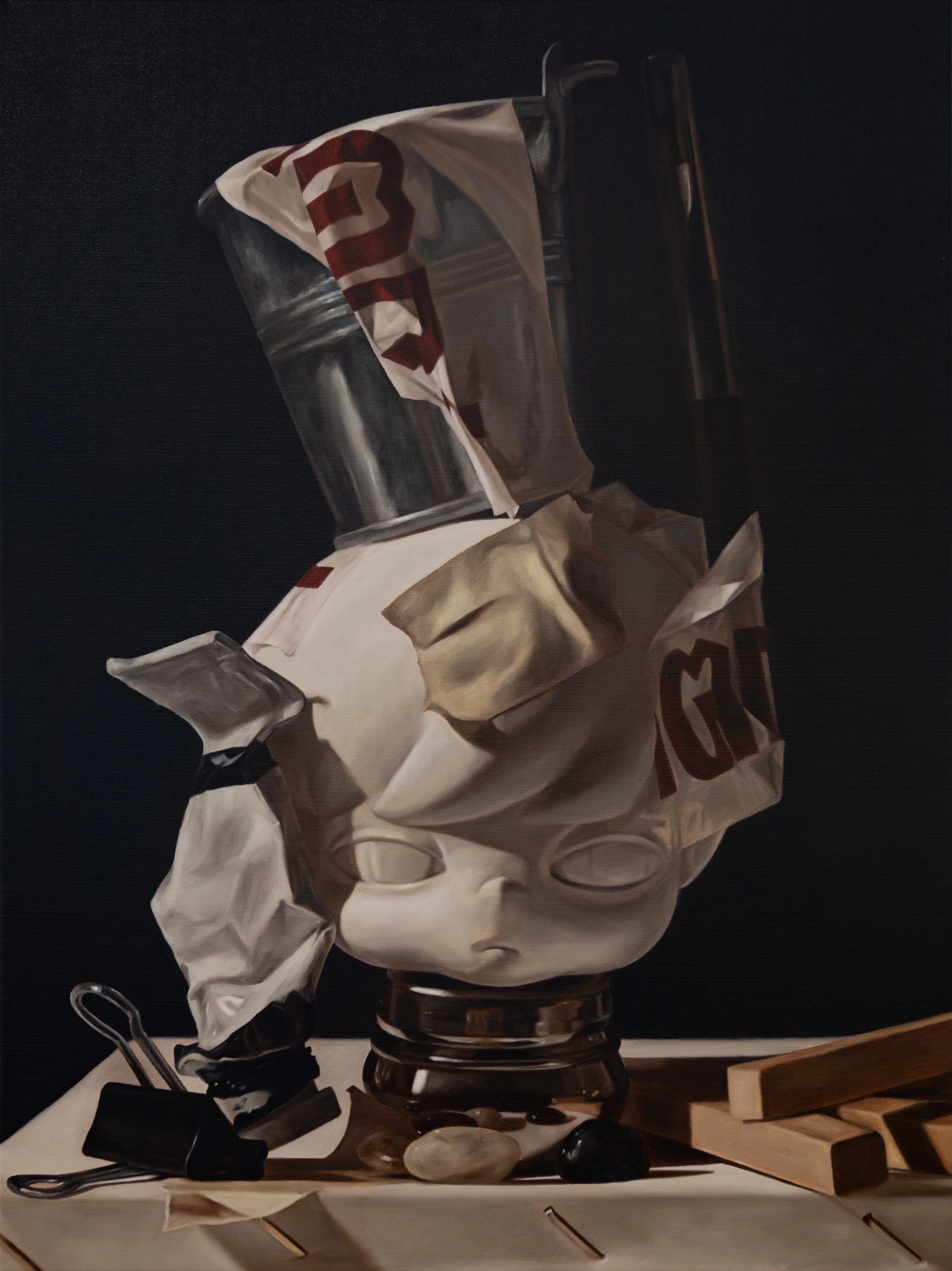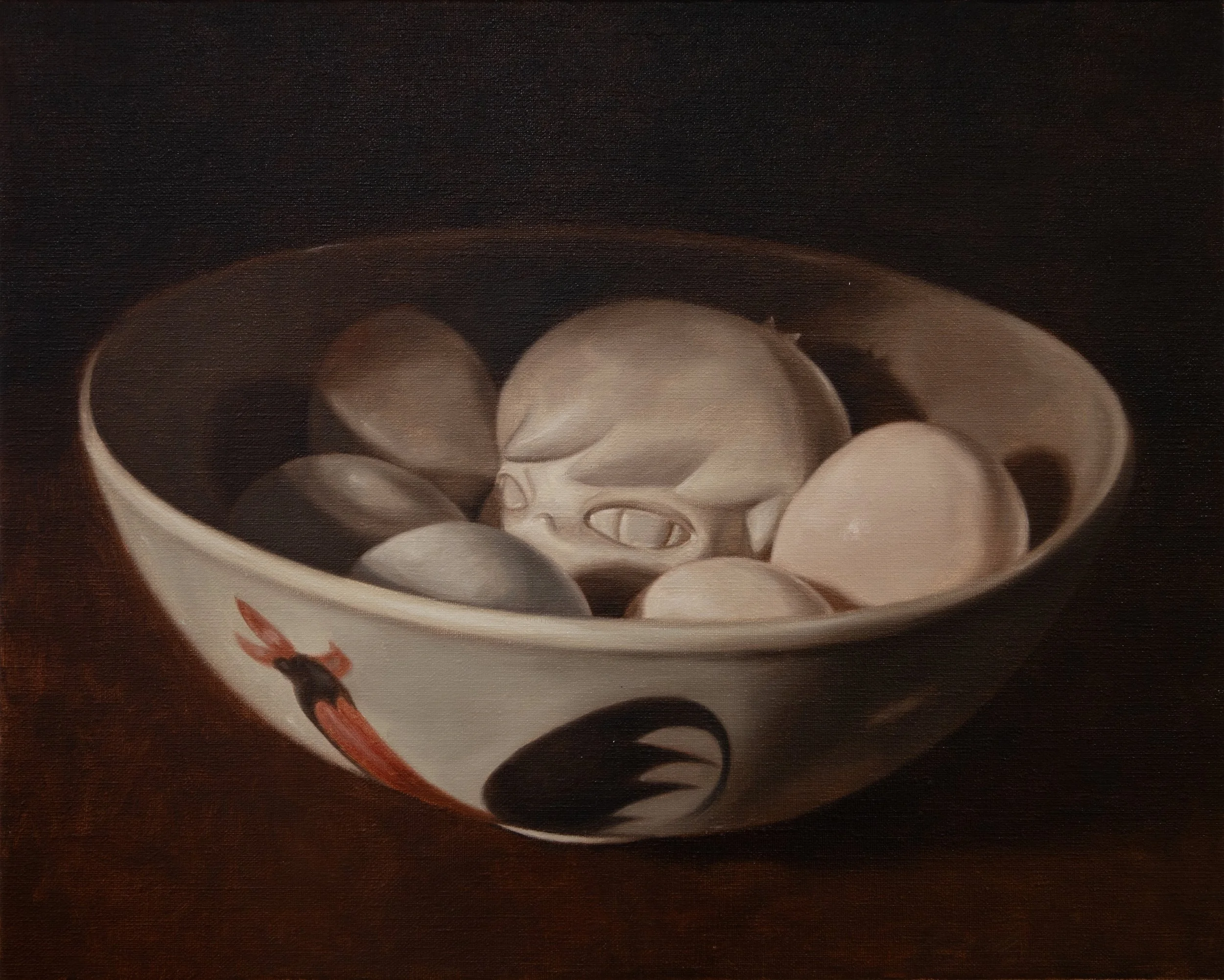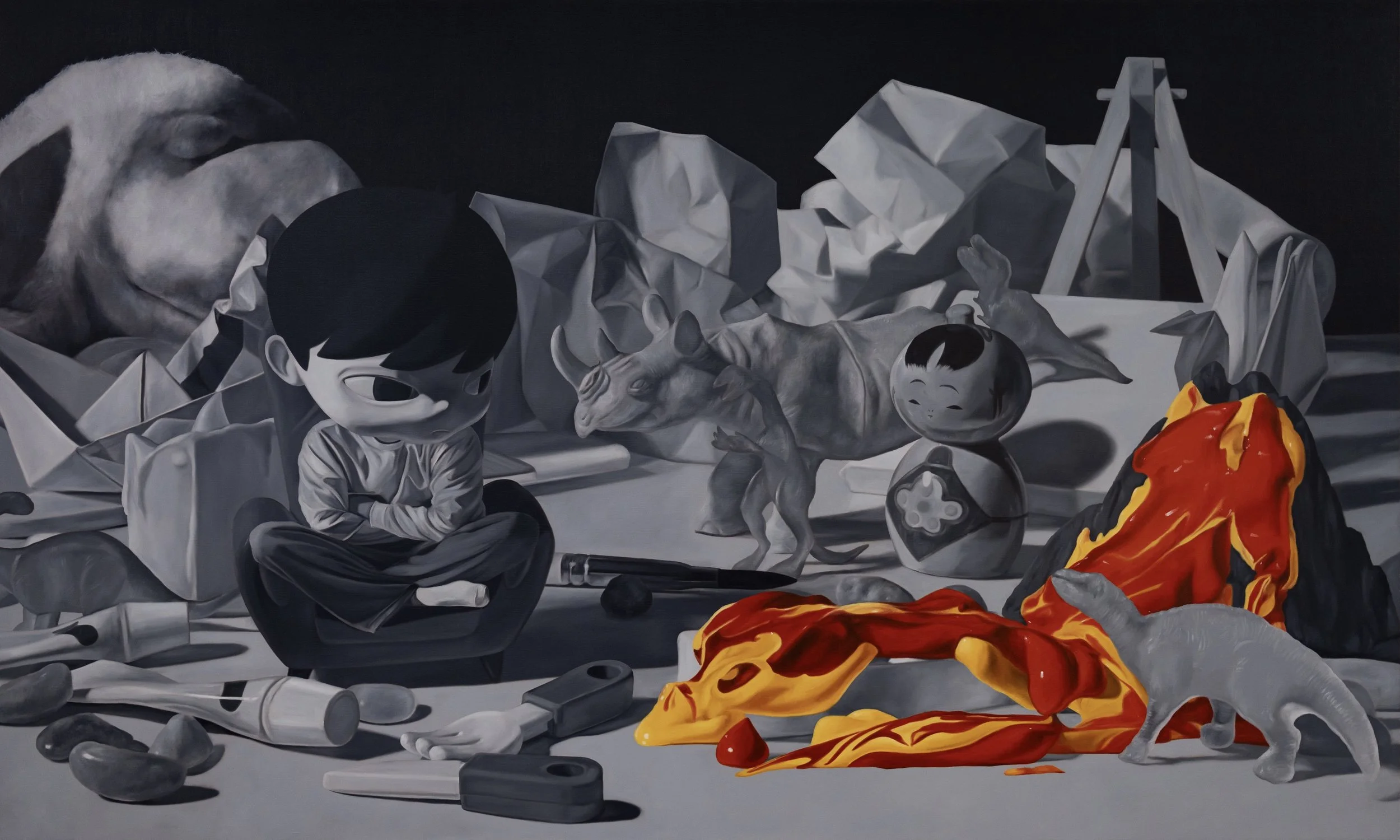EP5. ERTHH
Artist ERTHHH
What first inspired you to pursue painting as your main form of expression?
Painting gave me a way to process and reshape life experiences, not just to record moments but to rearrange them, find new meaning, and tell stories that hold both my joy and my struggles.
Still that kid, 2025
What made you get inspired by Prateep Kochabua, and how does his influence show up in your work?
I’ve been inspired by many artists and my tastes have changed with age. As a child I admired Prateep Kochabua because his work revealed the dedication, practice, learning, and lived experience behind each image.
Were there any early creative experiences or mentors that helped define your artistic path?
It started when I sold my first painting in university through someone who contacted me on Facebook. That moment opened a path for me, and I jumped in researching, learning, and showing my work. Exhibiting at various art fairs taught me a lot.
Rain dance, 2025
How would you describe your artistic style?
Contemporary pop-surrealism. Reframing social narratives and overlooked everyday scenes. The visual approach shifts with the content I want to communicate.
What led you to combine surrealism with pop culture and childhood imagery?
They carry simple everyday stories and the uncomplicated moments we all share but often overlook until we pause to reflect.
A lot on my plate, 2025
I’m seeing some other artists’ artworks in your pieces—what do they mean to you?
When I quote or echo other artists, it isn’t replication, it’s dialogue. They appear as markers of influence, admiration or critique layers within the narrative.
Is the character “Cheek” a version of yourself, or does he represent something else?
Cheek is both me and not me. He reflects my perspective but also represents anyone trying to make sense of life vulnerable, curious, and sometimes lost.
Artist head, 2025
How do you use visual metaphors to express emotion in your paintings?
I translate feelings into objects and scenarios. Collapsing toy to suggest fragility, everyday items to ground ordinary life. I want viewers to feel the emotion without explanation.
How do toys, packaging, and replicated sculptures function in your visual storytelling?
These objects serve as tools for storytelling. Some things can carry multiple meanings without being explained outright. Their significance depends on how each viewer’s knowledge and life experience shape their interpretation.
Keep it traditional, 2025
Do you think children today are initiated too early into adult systems of meaning through media and branding?
Yes, but it’s normal and hard to avoid. In a highly competitive world, taking on responsibility early can be an advantage. Maturity arrives at different times, some become “adult” at twenty, others at forty.
How has your belief in learning through experience influenced your creative journey?
I don’t treat mistakes as failures, they’re part of my material. Every setback and every win feeds the narrative. Life remains my best teacher.
Lava on the floor, 2025
What do you hope people carry with them after experiencing your art?
I want viewers to reflect. They don’t have to agree with me, I just want them to spend time with the work and think it through for themselves.
Where do you see your artistic practice heading in the next few years—anything you’re excited to explore?
I expect to grow; my thinking and expression will evolve with maturity. I plan to focus more deeply, try new ideas, and challenge myself through future projects


